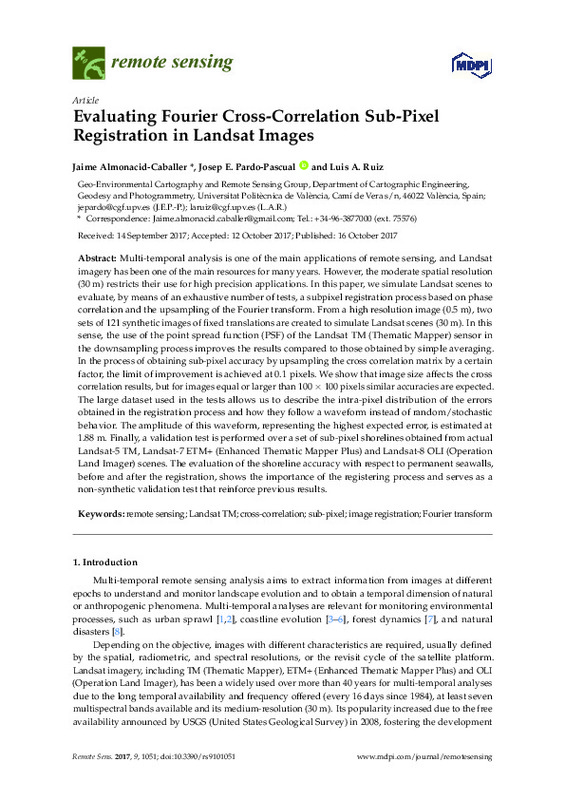JavaScript is disabled for your browser. Some features of this site may not work without it.
Buscar en RiuNet
Listar
Mi cuenta
Estadísticas
Ayuda RiuNet
Admin. UPV
Evaluating Fourier Cross-Correlation Sub-Pixel Registration in Landsat Images
Mostrar el registro completo del ítem
Almonacid Caballer, J.; Pardo Pascual, JE.; Ruiz Fernández, LÁ. (2017). Evaluating Fourier Cross-Correlation Sub-Pixel Registration in Landsat Images. Remote Sensing. 9(10). https://doi.org/10.3390/rs9101051
Por favor, use este identificador para citar o enlazar este ítem: http://hdl.handle.net/10251/108672
Ficheros en el ítem
Metadatos del ítem
| Título: | Evaluating Fourier Cross-Correlation Sub-Pixel Registration in Landsat Images | |
| Autor: | ||
| Entidad UPV: |
|
|
| Fecha difusión: |
|
|
| Resumen: |
[EN] Multi-temporal analysis is one of the main applications of remote sensing, and Landsat imagery has been one of the main resources for many years. However, the moderate spatial resolution (30 m) restricts their use for ...[+]
|
|
| Palabras clave: |
|
|
| Derechos de uso: | Reconocimiento (by) | |
| Fuente: |
|
|
| DOI: |
|
|
| Editorial: |
|
|
| Versión del editor: | https://doi.org/10.3390/rs9101051 | |
| Código del Proyecto: |
|
|
| Agradecimientos: |
|
|
| Tipo: |
|









